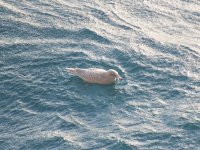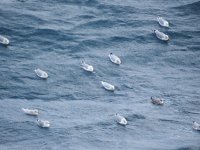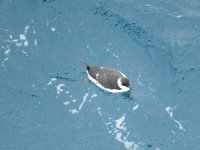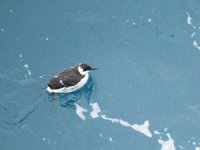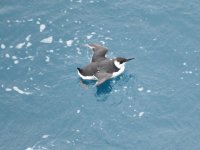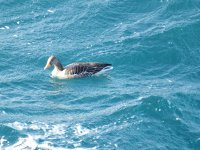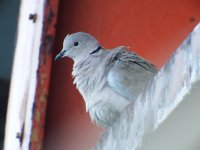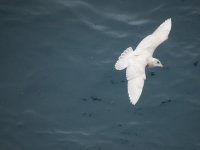10th Jan
Counted 60+ Herring Gulls and 10+ GBBs in the morning, but quite far out. In the afternoon they came in closer, and I was able to pick out two Glaucous Gulls. One I pictured in yesterday's post, and the other, a 1W bird is pictured below.
I have also received some good information from the NSBC to help me differentiate between the Glaucous and Iceland. I am told that with Glaucous, the primary feathers projection beyond the tail is the same length or shorter than the bill. The Iceland on the other hand has a much more attenuated look, with the primary projection beyong the tail being greater than the bill length. You can certainly see that principle clearly in the Glauc picture below.
It's a slow process, but I am starting to learn. :t:
Also counted yesterday were the 2 Scoters, 13 Kittiwake and a lone Fulmar. Another big storm has rolled in, so it looks like I won't be getting home today or even tomorrow. I'll just have to keep counting gulls!
Counted 60+ Herring Gulls and 10+ GBBs in the morning, but quite far out. In the afternoon they came in closer, and I was able to pick out two Glaucous Gulls. One I pictured in yesterday's post, and the other, a 1W bird is pictured below.
I have also received some good information from the NSBC to help me differentiate between the Glaucous and Iceland. I am told that with Glaucous, the primary feathers projection beyond the tail is the same length or shorter than the bill. The Iceland on the other hand has a much more attenuated look, with the primary projection beyong the tail being greater than the bill length. You can certainly see that principle clearly in the Glauc picture below.
It's a slow process, but I am starting to learn. :t:
Also counted yesterday were the 2 Scoters, 13 Kittiwake and a lone Fulmar. Another big storm has rolled in, so it looks like I won't be getting home today or even tomorrow. I'll just have to keep counting gulls!




